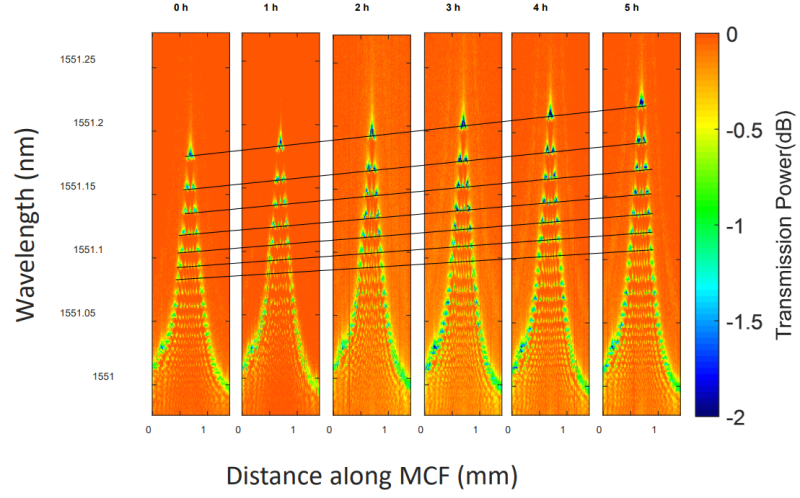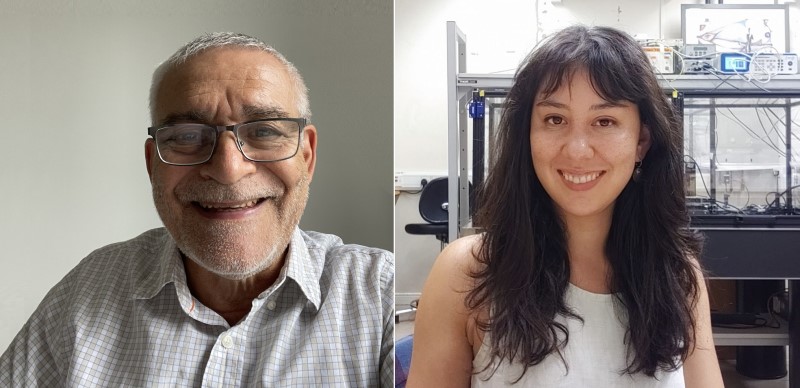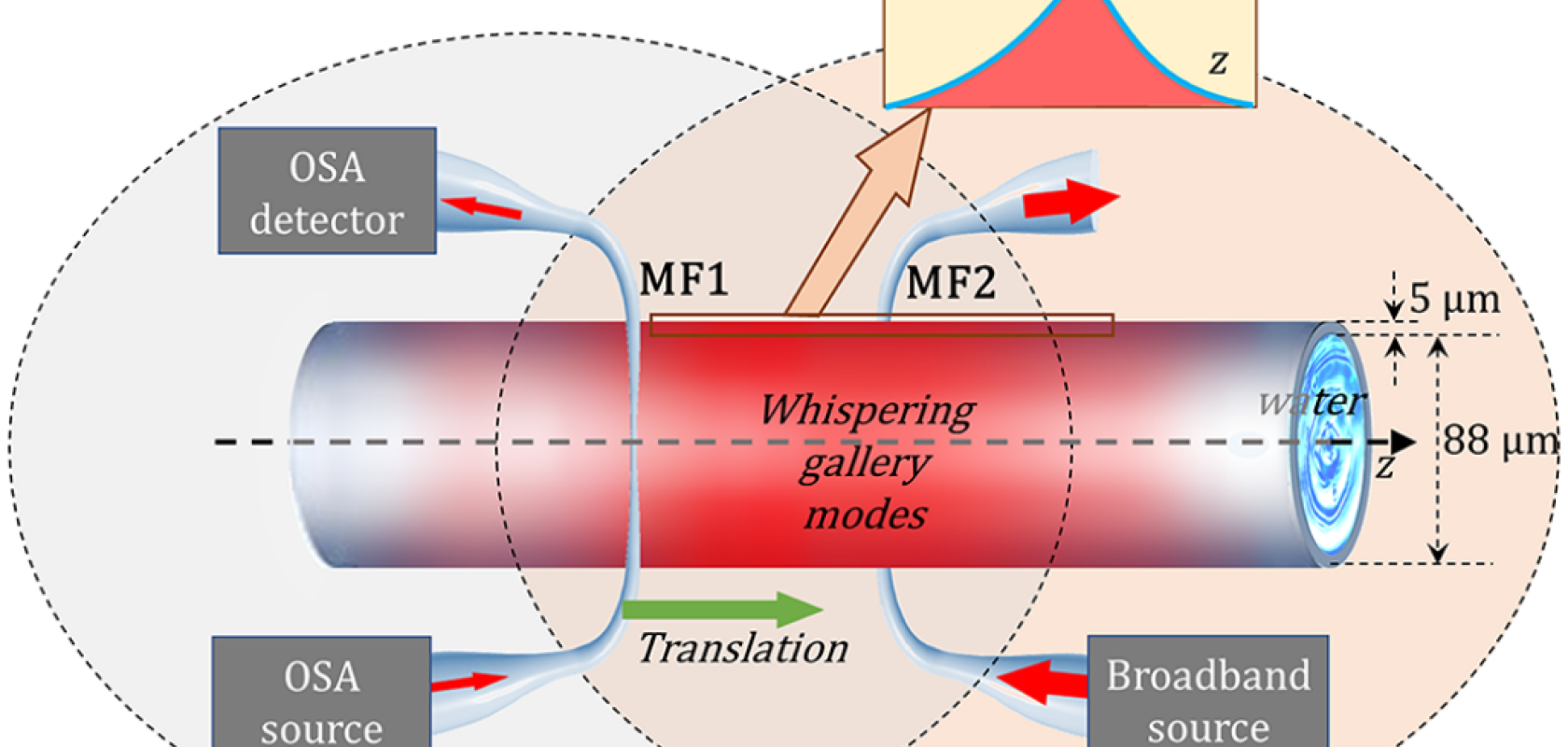Researchers at Aston University in Birmingham, UK, are developing a new method for fabricating ultralow-loss optical microresonators. The technique could be crucial to unlocking smaller ‘slow light’ devices, which in turn are key for the development of more advanced quantum, photonic computing and telecommunication systems.
The idea of such slow light devices has been exciting researchers since the turn of the century, according to Professor Misha Sumetsky, of Aston’s Institute of Photonic Technologies. However, their potential is still yet to be fully explored: ‘The problem which appeared, and the reason why this field of research is not as popular as it could be, is that people have not been able to achieve the exceptionally high precision and low losses required to fabricate miniature slow light devices.’
To explain his point further, Sumetsky described the microresonators he and his colleagues have been developing on the surface nanoscale axial photonics (SNAP) platform1, which has emerged in recent years. These microresonators manipulate light waves as they reflect around the internal circumference of a 100µm-diameter silica optical fibre and slowly propagate along its length.
The type of internal reflection referred to here is known as a whispering gallery mode, named after the wave phenomenon experienced within large dome structures such as that of St Paul’s Cathedral in London – where whispers from one part of the gallery can be heard clearly across the other side. Manipulation of the light (observable by slight variations in its wavelength) occurs when the light wave interacts with the microresonators – subtle, nanometre-level modulations of the silica fibre’s radius and refractive index – during this whispering gallery mode operation, which causes the light to localise and build up in intensity.
Sumetsky and his colleagues have been producing these modulations with increasing levels of precision over the years. For example, in 2011 they were able to create them with a precision of approximately two angstroms (2 x 10-10m, 2Å), and have since increased this precision to 0.2Å in 2016. This was done using a CO2 laser to locally anneal the silica fibre, heating it to temperatures of a few hundred degrees centigrade. This would release existing stresses within the fibre, causing the required modulation of the fibre’s radius and refractive index.
However, despite the remarkable order of magnitude increase in precision that’s been made, according to Sumetsky this is still not enough to produce the envisioned next-generation, miniaturised slow light devices. These include a diverse range of micro-photonic devices for future telecommunications, photonic computing and quantum applications – Sumetsky cited delay lines, optical buffers, dispersion compensators, microwave filters and frequency comb generators as examples.
‘Being able to make alterations at the picometre scale would be the optimal level of precision to produce these important slow light devices, which could help advance all forms of optical signal processing,’ he remarked. ‘This is why we are actively looking for new methods to process optical fibres.’
Picometre precision and beyond
Now, however, thanks to a discovery made by Sumetsky’s colleague, Gabriella Gardosi, a research student at Aston Institute of Photonic Technologies, his lofty goal of picometre-precision in microresonator fabrication has not only come within reach, but could also be surpassed entirely.
Gardosi has been working to incorporate micro-fluidics into the SNAP platform in order to better use thermal methods to tune the microresonators under development. One of her experiments involved filling a 100µm-diameter silica microcapillary fibre – with walls around 5µm thick – with de-ionised water. The microcapillary fibre was fabricated especially for these experiments at OFS Laboratories in the US by Dr Brian Mangan and Dr Gabe Puc. A microfibre taper and broadband light source were used to excite many different whispering gallery modes simultaneously within the fibre, which would then evanescently couple into the water and generate heat. This would create temporary microresonators within the locally heated silica fibre due to the thermo-optic effect.
‘I was looking at how I could tune these temporary microresonators when one day, following many hours of experiments, I accidentally left the broadband light source on that we were using to perform the thermal tuning, and went home for the night,’ she said. ‘When I came back the next day 10-12 hours later, I switched off the broadband light source (which had been left in a perfectly safe condition) and saw that the temporary microresonators had remained, which wouldn't have happened if I’d switched the equipment off the previous night. Exploring this further I realised that a very slow process had been occurring between the silica and the heated water, and that over time we could observe the very gradual growth of permanent microresonators. I later came to call this technique “slow optical cooking”’. Numerous further experiments showed that the discovered effect is not an experimental artefact and leads to a new ultraprecise method of fabrication of SNAP microresonators (see figure 1).
The results of these experiments were published in ACS Photonics2 and described in Gardosi’s recently defended PhD thesis.
Gardosi and Sumetsky experimented further and found that by growing the microresonators via slow cooking in steps, with a step time of just one hour, sub-angstrom precision in the variation of the microcapillary’s effective wall thickness, per step, could be achieved (see figure 2). What’s more, after experimenting further still, with heating steps in the order of 10 seconds, they were not only able to produce microresonators with Sumetsky’s much sought-after picometre levels of precision, but can now even predict sub-picometre levels of precision being possible in future iterations of their work.

Figure 2: Spectrograms of a SNAP microresonator post-processed at 1h intervals demonstrate linear growth by slow cooking at sub-picometre per minute in wavelength variation.
These amazing findings were recently reported at the CLEO conference in California3 ‘At CLEO the findings were presented in a poster format and generated a lot of interest, which led to many people approaching Gabriella to find out more about her work,’ said Sumetsky. ‘We had researchers come over and congratulate us on the results, and people were even going away and returning with their colleagues to show them as well. We were very happy with the buzz it generated.’ The work will also be presented at the upcoming Institute of Physics’ Photon 22 conference in Nottingham, UK this week.
Superior sensing inbound
Gardosi’s discovery has also highlighted the potential of using whispering gallery modes for the high-precision sensing of reactions occurring at glass-water interfaces. This could be done by observing the slight variations in wavelength as the whispering gallery modes interact with modulations in the silica microcapillary’s refractive index and wall thickness.
‘While whispering gallery mode microfluidic sensors have already been shown to detect down to a single molecule, we haven't to our knowledge seen any work that uses them to examine the glass-water interaction I accidentally found,’ Gardosi explained. ‘This is significant as glass and water are supposedly not meant to be very reactive with each other – in fact, it usually takes a very long time in order to see these reactions, weeks, months, even years. However, using this technique, it’ll be possible to see if there is a reaction occurring between glass and water within hours due to it being so sensitive. We believe the slow cooking process creates nanocracks inside the silica glass on the internal interface, and those nanocracks could then be increasing our detection rate, as they increase the number of binding sites that can measure these sorts of changes. This is why it’s an exceptionally sensitive technique and can be used to see processes that have previously been more obscure.’
While Gardosi found some older chemistry papers exploring the interaction of silica glass with water, she says the research has always been quite controversial due to there always having been a limitation in the precision with which these interactions can be measured. ‘This is why using the whispering gallery modes – with its single-molecule level of detection, could be very interesting for this area of research,’ she remarked.
Future directions
The researchers’ future work could involve using the ultra-precise sensing capabilities of their new method to explore how different food and beverages interact with various packaging materials. Gardosi explained: ‘So one of our ideas is to coat the silica fibre on the internal wall with a material of interest – e.g. a new bioplastic – and then we can put liquid food or beverages inside and determine over time whether there are any reactions taking place, which would quickly reveal whether material is safe for use in packaging or not (also looking at how microwavable or dishwasher-safe certain materials are). So this could be an outcome of our research which is particularly of interest to industry – we believe it could be the most accurate sensing technique for this type of application.’
Additionally, further work will involve creating microresonators of pre-determined size along the fibre, as this will be important in producing devices such as delay lines or frequency comb generators. ‘We need to have ultra-high precision in the fabrication of these microresonators along the fibre to produce such devices,’ said Gardosi. ‘So that’s what I’m currently working on – using the slow cooking technique to generate the refractive index changes for the required variation along the fibre.’
Overall, future applications of the discovered slow optical cooking technique range from the fabrication of optical microresonators with unprecedented sub-picometer precision, to ultraprecise spatiotemporal microfluidic sensing. In addition, Gardosi and Sumetsky’s work has revealed a new ultraprecise method to investigate mechanical, physical, and chemical processes at liquid−solid interfaces.
‘This achievement has also encouraged us to further develop this and other ultraprecise SNAP fabrication methods (such as CO2 laser annealing) to have a similar picometre precision while also being faster,’ Sumetsky concluded. ‘This could enable the scalable fabrication of advanced miniature optical devices required in future quantum, optical computing and telecommunication technologies.’

Professor Misha Sumetsky (left) and Gabriella Gardosi (right) have developed an ultra-precise method for fabricating optical microresonators at Aston University’s Institute of Photonic Technologies.
References
[1] ‘Optical bottle microresonators’ M. Sumetsky: Progress in Quantum Electronics 2019 64, 1-30. DOI: https://doi.org/10.1016/j.pquantelec.2019.04.001
[2] ‘Photonic Microresonators Created by Slow Optical Cooking’ G.Gardosi, B.Mangan, G. Puc, M.Sumetsky: ACS Photonics 2021 8 (2), 436-442. DOI: 10.1021/acsphotonics.0c01851
[3] ‘Picometer-precise post-processing of optical microresonators via slow-cooking’ G. Gardosi, B. J. Mangan, and M. Sumetsky, in Conference on Lasers and Electro-Optics, Technical Digest Series (Optica Publishing Group, 2022), paper JW3A.49. https://opg.optica.org/abstract.cfm?URI=CLEO_SI-2022-JW3A.49


